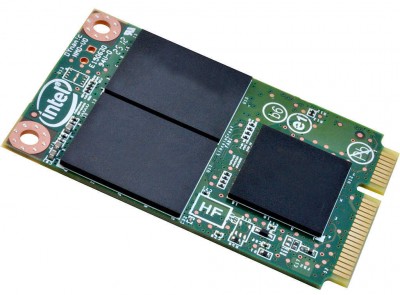 In the old days, when Solid State Drives first “came out”, there was a big problem with write cycles. The more you wrote to them, the worse it got. Every single write to the drive shortened its life by a big chunk. Not so, anymore…
In the old days, when Solid State Drives first “came out”, there was a big problem with write cycles. The more you wrote to them, the worse it got. Every single write to the drive shortened its life by a big chunk. Not so, anymore…
It used to be that we were confounded and cursed by poor controllers, poor hardware, and poor engineering. That is to be expected in a new electronic world. I most certainly am not condemning these very smart, in the forefront, people. Kudos to all of them for their brilliant work, but…
The Last Article
This will probably be the last article I ever write about Solid State Drives vs Defragmentation. Things have changed for the better in these regards. The only reason I might broach the subject again is if things dramatically change in the future. I am simply worn out. Besides, I now believe the current technology has advanced far enough to satisfy me in regards to the longevity of the system. Writes be damned! They no longer matter that much.
It used to be that every write to an SSD was on par with a deprivation of life– that is still true, but to a much lesser degree. I used to preach about how every write to an SSD should be treated like a virus. I used to write articles about how to avoid all these ‘writes’ to SSDs because they were so debilitating to the hardware. Now, I don’t care so much. The entire matter has become pretty much moot. Technology has changed, and so must my advice.
Common Wisdom
Everyone knows that Solid State Drives (SSDs) should never be defragmented. It is counter-intuitive and, given their weakness to write cycles, it is simply not recommended.
Then came TRIM..
TRIM
A Trim command (commonly typeset as TRIM) allows an operating system to inform a solid-state drive (SSD) which blocks of data are no longer considered in use and can be wiped internally.
Source ~ https://en.wikipedia.org/wiki/Trim_%28computing%29
Windows 7 came to know about SSDs and utilized this function. Unfortunately, Windows eXPerience is still ignorant of this new innovation. Another good reason to move on…especially if you plan to upgrade your hardware.
Then, in Windows 8 and beyond, came a more sophisticated approach. They, meaning Microsoft, said that due to the specific limitations of NTFS, defragmentation is necessary after all. Do not fear the strong term “defragmentation”, because it really no longer exists, at least not in the original sense of the word. Now it simply means TRIM. And TRIM is basically harmless and, in fact, can do a great bit of good along the way.
Note: A person could still truly run a defragmentation program on an SSD, and that would still truly be unwise.
The Bottom Line
SSDs are no longer considered to be less rigorous than a standard Mechanical Hard Disk Drive (colloquially referred to as a “spinner”). The dreaded short-time due to excessive writes is no longer a real-life factor. They are expected to last as long as a spinner and this means there is no longer anything to worry about regarding disk writes. Five years is the “spinner” standard. Some last much longer, some much less. The same holds true for SSDs. It all boils down to how you use it. If it gets used a lot, then expect a shorter life time, and vice versa. Nothing unusual there.
The scheduled TRIM, or dreaded SSD Defragment Command, issued by Windows on a regular basis, should no longer be feared. Based on personal experimentation, the TRIM command does not take more than a few seconds and does not constitute a major, complete, defragmentation process.
We’ve Gotten Smarter

The SSD manufacturers have gotten smarter, the software publishers have gotten smarter, and the controller producers have gotten smarter, as well.
Since we are all so smart now, I think it’s time to shuck the concern about TRIM-based defragmentation of SSDs. The worry is unwarranted, and the SSDs seem to be perfectly happy with that decision…
Richard
—

Richard,
Should I use the TRIM feature in Windows 8.1 or the TRIM software provided by the manufacture of my SSD?
Hi Robert,
I let Windows do it’s thing. I’ve read that it monitors the drive and runs TRIM as needed or about every 28 days, whichever comes first.
My Intel SSD Toolbox utility recommends once a week. Figuring that they should know their own drive better than anyone, I run the Intel software once a week.
So, the answer is, I use both. That may be overkill, but I like to know first-hand that it is being done on a regular basis.
Incidentally, some SSDs don’t have their own utilities written for them (Crucial SSDs, for example) in which case the only recourse is to let Windows manage everything, unless one would decide to use a third-party program.
Richard
Incorrect. TRIM and defrag are separate things, and TRIM is good, yes. But Windows 8 does fully defrag SSDs, and Microsoft has been very unclear on their reasoning.
http://www.outsidethebox.ms/why-windows-8-defragments-your-ssd-and-how-you-can-avoid-this/
Hi Dmitri,
I just read your linked article. It seems well thought out.
It seems to also say that the TRIM command is sent unless the SSD is fragmented at or above 10%.
I would have to agree, if that’s the case, that automatic defrag should be disabled for all installed SSDs.
I’ve read answers to the SSD/defrag question in many forums. “Unclear” is an understatement. They range from five destructive defrag ops to TRIM only ops.
Until there is a definitive answer from MS, I will keep automatic SSD defrags disabled on my computer.
Thanks for the comment and possible correction,
Richard